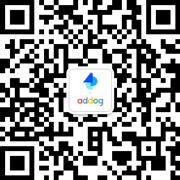
本案例默认翻译为中文,点击可切换回原语言
已切换成原语言,点击可翻译成中文
汽车 vs 数据
案例简介:概要 在加拿大国家铁路客运服务 VIA Rail 覆盖的市场中,当路况理想时,汽车是最快的选择。然而,大多数时候,当交通和恶劣天气挡住了路,火车成为最好的解决方案。当消费者计划从 a点到 B 点的旅行时,他们主要关心的是最短的旅行时间。这是一个全球性的真理,但尤其是强大的,因为它的广阔土地可以让旅行时间甚至更长的时间。由于他们无条件地热爱汽车,司机往往对开车到达某个地方需要多长时间过于乐观,没有将实时路况纳入他们的计算。 战略 的竞选策略,利用实时路况和气象数据,以最大限度地相关信息的驾驶者。我们比较了两种交通方式的实时旅行信息: 当交通或恶劣天气条件出现时,司机会被提醒他们选择了错误的交通方式。与谷歌地图和天气网络的合作使我们的数据战略变得生动起来。我们的编程接口,专为这场和集成的数据传送专线在每个触摸点,使实时数据管理和同步所有的家庭和数字通道。我们面临的挑战是为司机提供 VIA Rail 覆盖的 16 条高速公路的实时交通信息。在任何给定的时间点,消息都是为每个消费者定制的。它考虑了他们当前的地理位置、他们预测的最终目的地以及实时交通和天气数据。我们战略的成功取决于我们传达的信息的相关性和质量。它成为司机有用的信息,让 VIA Rail 突破汽车爱好者的感知屏幕。 相关性 这项活动的整个规划和执行依赖于实时数据的智能使用,在通勤的三个阶段接触旅行者: 之前、期间和之后。事实上,我们使用数据最初识别潜在旅行者,在旅行前阶段为他们提供个性化的数字横幅和搜索广告。后来,我们利用数据的实时 “目的地” 的数字广告牌。然后,我们收集了所有 150万个看到数字广告牌的人的独特移动设备 id,以便在他们陷入交通堵塞后重新定位他们。 结果 VIA Rail 成功地窃取了股票,这似乎是一场无与伦比的竞争: 汽车!火车载客量增长了 11.7% 年度,收入增加了 13.9%,以牺牲的汽车。我们所有的媒体策略大大超过通常的标准。上下文化消息产生的点击率比我们所有的展示和移动活动高出 95%,它们帮助通过铁路预订引擎提高了 14% 的转换率。最后,超过 150万独特的移动设备 id 收集的 DMP,增加我们的观众可以激活我们一直在宣传活动。 MediaStrategy 我们有针对性的驱动程序各个阶段的目标消费者的行程: 然后我们发现司机要走的针对那些看起来的天气和交通信息的境外家乡与数字条幅和扫描电镜 (SEM) 传送实时运行时间为汽车与火车。此外,我们也编列了标书,VIARail 可以捕捉 100% SOV 在这关键时刻。在此期间,我们的目标是在 VIARail 覆盖的市场内,在连接主要城市的高速公路上堵塞交通的司机。数字家庭以外,我们涵盖所有魁北克城之间的主要公路和多伦多。该消息是适于实时显示,预计到达时间的每个星座的位置和目前的交通条件。因为它是基于每个板的地理位置,所以消息总是定制的。之后,我们利用我们的家庭外的伙伴关系,收集所有的移动 deviceIDs 司机受到广告的司机因交通堵塞。我们再重新定向的司机,他们到达了目的地,展示个性沮丧的消息,提醒他们在交通和惠益的火车。 活动描述 是时候释放数据的力量从汽车上窃取股份了。消费者必须相信当前的实时信息是重要的: 当他们被困在了交通。更重要的是恼人的驱动比浪费时间在交通阻塞?我们开始谈话的时候,我们知道他们要走很远的距离,让他们知道他们预计到货时间长于预期 (可能比乘火车)。如果他们决定无论如何都要开车,当他们在繁忙的高速公路上行驶时,我们的实时交通信号被激活了。我们提醒他们他们到达目的地后不久,他们的旅行有多糟糕。
汽车 vs 数据
案例简介:Synopsis In the markets covered by VIA Rail, Canada's national rail passenger service, the car is the fastest option when the road conditions are ideal. Most of the time however, when traffic and bad weather get in the way, the train becomes the best solution. When consumers plan a trip from Point A to Point B, their primary concern is to have the shortest travel time. This is a global truth, but it is especially powerful in Canada because its vast territories can make travel time even longer. Because of their unconditional love of cars, drivers tend to be overly optimistic about how long it actually takes to get somewhere by car, failing to factor real-time road conditions into their calculations. Strategy The campaign strategy was to leverage real-time traffic and weather data to maximize the relevance of the message for motorists. We compared real-time travel information for both transportation options: when traffic or bad weather conditions arise, drivers were reminded they took the wrong transportation mode. Partnerships with Google Maps and the Weather Network made our data strategy come to life. We created programming interfaces specifically for this campaign and integrated the data feed at each touch point, enabling the real-time data management and synchronization across all out-of-home and digital channels. Our challenge was to provide drivers with real-time traffic information on each of the 16 stretches of highways covered by VIA Rail. At any given point in time, the message was customized to each consumer. It took into consideration their current geo-position, their predicted end destination and real-time traffic and weather data. The success of our strategy hinged on the relevance and quality of the information we communicated. It became useful information to drivers, allowing VIA Rail to breakthrough the perception screen of car lovers. Relevancy The entire planning and execution of this campaign relied on the smart use of real time data to reach travellers at 3 stages of a commute: before, during and after. In fact, we used data to initially identify potential travelers to serve personalized digital banners and search ads during their pre-trip phase. Afterwards, we leveraged the data from real-time “time to destination” on digital billboards. We then collected all 1.5 million unique mobile device IDs of the people who saw the digital billboard in order to retarget them later after they were stuck in traffic. Outcome VIA Rail succeed at stealing shares to what seemed an unbeatable competition: car! Train ridership rose by 11.7% year-over-year, and revenues increased by 13.9%, to the expense of cars. All of our media tactics greatly outperformed the usual standards. Contextualized messages generated click rates that were 95% higher than all of our display and mobile campaigns, and they helped increase the conversion rate by 14% on VIA Rail's booking engine. Finally, over 1.5 million unique mobile device IDs were collected in our DMP, increasing the volume of audiences we can activate in our always-on campaigns. MediaStrategy We targeted drivers at all phases of the targeted consumers’ trip: Before We identified drivers about to travel by targeting those who looked up for weather or traffic information for a destination outside their home town with digital banners and SEM communicating real-time travel times for car versus train. In addition, we also programmed the bids so that VIARail could capture 100% SOV during these moments of truth. During We targeted drivers stuck in traffic on the highways connecting the major cities, within the market covered by VIARail. With digital out-of-home, we covered all of the major highways between Quebec City and Toronto. The message was adapted in real-time, displaying the estimated arrival time based on the location of each sign and current traffic conditions. Because it was based on the geo-location of each board, the message was always customized. After We leveraged our out-of-home partnership to collect all the mobile deviceIDs of drivers exposed to the advertising as well as drivers who were stuck in traffic jams. We then re-targeted these drivers as they arrived at their destination, displaying a personalized message that reminded them of the frustration of being in traffic and the benefits of taking the train. CampaignDescription It was time to unleash the power of data to steal shares from cars. Consumers needed to be convinced by real-time information at the moment it mattered the most: when they were stuck in the traffic. What’s more annoying for a driver than waste time in traffic congestion? We initiated the conversation when we knew they were going to travel a long distance, showing them that their projected arrival time was longer than expected (and probably longer than traveling by train). If they decided to take their cars anyway, our real time traffic feed was activated as they are driving down a busy highway. And we reminded them how bad was their travel to their final destination shortly after they arrived.
Car vs Data
案例简介:概要 在加拿大国家铁路客运服务 VIA Rail 覆盖的市场中,当路况理想时,汽车是最快的选择。然而,大多数时候,当交通和恶劣天气挡住了路,火车成为最好的解决方案。当消费者计划从 a点到 B 点的旅行时,他们主要关心的是最短的旅行时间。这是一个全球性的真理,但尤其是强大的,因为它的广阔土地可以让旅行时间甚至更长的时间。由于他们无条件地热爱汽车,司机往往对开车到达某个地方需要多长时间过于乐观,没有将实时路况纳入他们的计算。 战略 的竞选策略,利用实时路况和气象数据,以最大限度地相关信息的驾驶者。我们比较了两种交通方式的实时旅行信息: 当交通或恶劣天气条件出现时,司机会被提醒他们选择了错误的交通方式。与谷歌地图和天气网络的合作使我们的数据战略变得生动起来。我们的编程接口,专为这场和集成的数据传送专线在每个触摸点,使实时数据管理和同步所有的家庭和数字通道。我们面临的挑战是为司机提供 VIA Rail 覆盖的 16 条高速公路的实时交通信息。在任何给定的时间点,消息都是为每个消费者定制的。它考虑了他们当前的地理位置、他们预测的最终目的地以及实时交通和天气数据。我们战略的成功取决于我们传达的信息的相关性和质量。它成为司机有用的信息,让 VIA Rail 突破汽车爱好者的感知屏幕。 相关性 这项活动的整个规划和执行依赖于实时数据的智能使用,在通勤的三个阶段接触旅行者: 之前、期间和之后。事实上,我们使用数据最初识别潜在旅行者,在旅行前阶段为他们提供个性化的数字横幅和搜索广告。后来,我们利用数据的实时 “目的地” 的数字广告牌。然后,我们收集了所有 150万个看到数字广告牌的人的独特移动设备 id,以便在他们陷入交通堵塞后重新定位他们。 结果 VIA Rail 成功地窃取了股票,这似乎是一场无与伦比的竞争: 汽车!火车载客量增长了 11.7% 年度,收入增加了 13.9%,以牺牲的汽车。我们所有的媒体策略大大超过通常的标准。上下文化消息产生的点击率比我们所有的展示和移动活动高出 95%,它们帮助通过铁路预订引擎提高了 14% 的转换率。最后,超过 150万独特的移动设备 id 收集的 DMP,增加我们的观众可以激活我们一直在宣传活动。 MediaStrategy 我们有针对性的驱动程序各个阶段的目标消费者的行程: 然后我们发现司机要走的针对那些看起来的天气和交通信息的境外家乡与数字条幅和扫描电镜 (SEM) 传送实时运行时间为汽车与火车。此外,我们也编列了标书,VIARail 可以捕捉 100% SOV 在这关键时刻。在此期间,我们的目标是在 VIARail 覆盖的市场内,在连接主要城市的高速公路上堵塞交通的司机。数字家庭以外,我们涵盖所有魁北克城之间的主要公路和多伦多。该消息是适于实时显示,预计到达时间的每个星座的位置和目前的交通条件。因为它是基于每个板的地理位置,所以消息总是定制的。之后,我们利用我们的家庭外的伙伴关系,收集所有的移动 deviceIDs 司机受到广告的司机因交通堵塞。我们再重新定向的司机,他们到达了目的地,展示个性沮丧的消息,提醒他们在交通和惠益的火车。 活动描述 是时候释放数据的力量从汽车上窃取股份了。消费者必须相信当前的实时信息是重要的: 当他们被困在了交通。更重要的是恼人的驱动比浪费时间在交通阻塞?我们开始谈话的时候,我们知道他们要走很远的距离,让他们知道他们预计到货时间长于预期 (可能比乘火车)。如果他们决定无论如何都要开车,当他们在繁忙的高速公路上行驶时,我们的实时交通信号被激活了。我们提醒他们他们到达目的地后不久,他们的旅行有多糟糕。
Car vs Data
案例简介:Synopsis In the markets covered by VIA Rail, Canada's national rail passenger service, the car is the fastest option when the road conditions are ideal. Most of the time however, when traffic and bad weather get in the way, the train becomes the best solution. When consumers plan a trip from Point A to Point B, their primary concern is to have the shortest travel time. This is a global truth, but it is especially powerful in Canada because its vast territories can make travel time even longer. Because of their unconditional love of cars, drivers tend to be overly optimistic about how long it actually takes to get somewhere by car, failing to factor real-time road conditions into their calculations. Strategy The campaign strategy was to leverage real-time traffic and weather data to maximize the relevance of the message for motorists. We compared real-time travel information for both transportation options: when traffic or bad weather conditions arise, drivers were reminded they took the wrong transportation mode. Partnerships with Google Maps and the Weather Network made our data strategy come to life. We created programming interfaces specifically for this campaign and integrated the data feed at each touch point, enabling the real-time data management and synchronization across all out-of-home and digital channels. Our challenge was to provide drivers with real-time traffic information on each of the 16 stretches of highways covered by VIA Rail. At any given point in time, the message was customized to each consumer. It took into consideration their current geo-position, their predicted end destination and real-time traffic and weather data. The success of our strategy hinged on the relevance and quality of the information we communicated. It became useful information to drivers, allowing VIA Rail to breakthrough the perception screen of car lovers. Relevancy The entire planning and execution of this campaign relied on the smart use of real time data to reach travellers at 3 stages of a commute: before, during and after. In fact, we used data to initially identify potential travelers to serve personalized digital banners and search ads during their pre-trip phase. Afterwards, we leveraged the data from real-time “time to destination” on digital billboards. We then collected all 1.5 million unique mobile device IDs of the people who saw the digital billboard in order to retarget them later after they were stuck in traffic. Outcome VIA Rail succeed at stealing shares to what seemed an unbeatable competition: car! Train ridership rose by 11.7% year-over-year, and revenues increased by 13.9%, to the expense of cars. All of our media tactics greatly outperformed the usual standards. Contextualized messages generated click rates that were 95% higher than all of our display and mobile campaigns, and they helped increase the conversion rate by 14% on VIA Rail's booking engine. Finally, over 1.5 million unique mobile device IDs were collected in our DMP, increasing the volume of audiences we can activate in our always-on campaigns. MediaStrategy We targeted drivers at all phases of the targeted consumers’ trip: Before We identified drivers about to travel by targeting those who looked up for weather or traffic information for a destination outside their home town with digital banners and SEM communicating real-time travel times for car versus train. In addition, we also programmed the bids so that VIARail could capture 100% SOV during these moments of truth. During We targeted drivers stuck in traffic on the highways connecting the major cities, within the market covered by VIARail. With digital out-of-home, we covered all of the major highways between Quebec City and Toronto. The message was adapted in real-time, displaying the estimated arrival time based on the location of each sign and current traffic conditions. Because it was based on the geo-location of each board, the message was always customized. After We leveraged our out-of-home partnership to collect all the mobile deviceIDs of drivers exposed to the advertising as well as drivers who were stuck in traffic jams. We then re-targeted these drivers as they arrived at their destination, displaying a personalized message that reminded them of the frustration of being in traffic and the benefits of taking the train. CampaignDescription It was time to unleash the power of data to steal shares from cars. Consumers needed to be convinced by real-time information at the moment it mattered the most: when they were stuck in the traffic. What’s more annoying for a driver than waste time in traffic congestion? We initiated the conversation when we knew they were going to travel a long distance, showing them that their projected arrival time was longer than expected (and probably longer than traveling by train). If they decided to take their cars anyway, our real time traffic feed was activated as they are driving down a busy highway. And we reminded them how bad was their travel to their final destination shortly after they arrived.
汽车 vs 数据
暂无简介
Car vs Data
暂无简介
基本信息
- 广告战役: #VIA Rail-网络-8883#
- 广告品牌: VIA Rail
- 发布日期: 2000
- 行业领域: 互联网服务 , 物流运输 , 旅游/酒店
- 媒体类别: 短视频
- 广告语言: 英语
- 媒介平台: 网络
- 获得奖项:
暂无评分
已有{{caseInfo.tatolPeople}}人评分
创作者
案例详情
涵盖全球100万精选案例,涉及2800个行业,包含63000个品牌
热门节日97个,23个维度智能搜索
-

项目比稿
品类案例按时间展现,借鉴同品牌策略,比稿提案轻松中标
-

创意策划
任意搜索品牌关键词,脑洞创意策划1秒呈现
-

竞品调研
一键搜索竞品往年广告,一眼掌握对手市场定位
-

行业研究
热词查看洞悉爆点,抢占行业趋势红利
登录后查看全部案例信息
如果您是本案的创作者或参与者 可对信息进行完善







